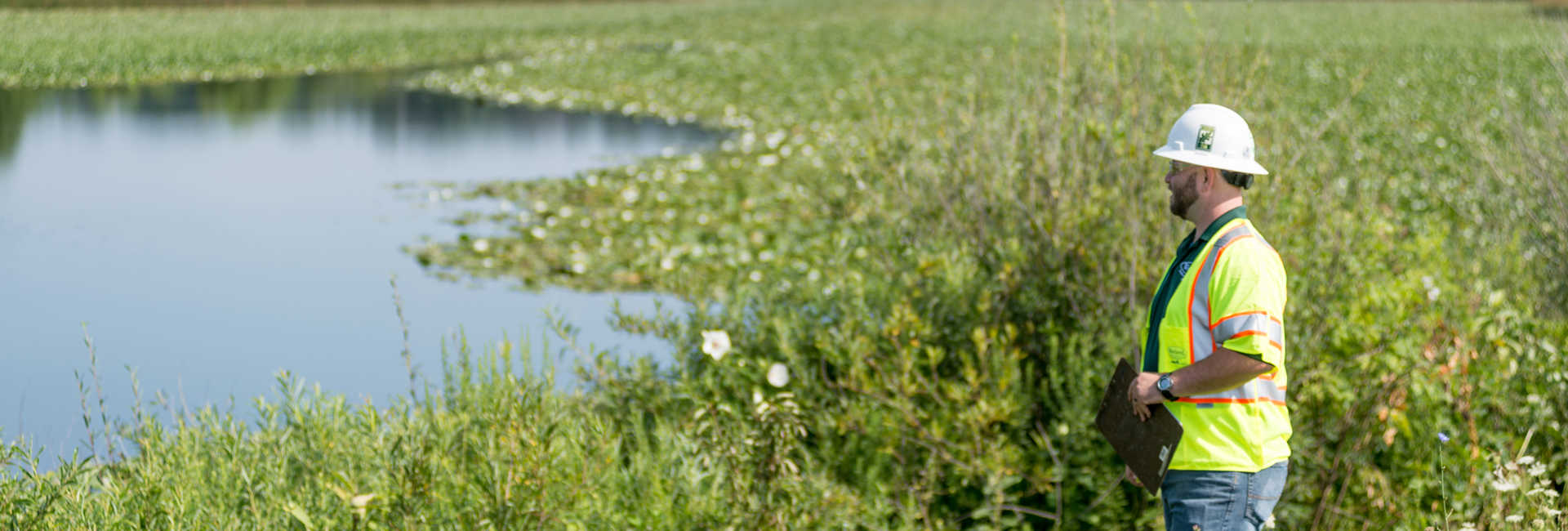A New Tool In The Environmental Toolbox
For most projects involving environmental management or permitting, identification of rare species habitat or potential presence on a property is often the first step of environmental compliance. Understanding onsite species locations and habitat use is essential to developing conservation priorities and evaluating potential development opportunities or limitations.
Traditionally these assessments are done exclusively through onsite ecological community evaluation or presence/absence surveys following standardized field methods. While these efforts are a vital part of the environmental compliance process, a new tool has emerged to facilitate the efficiency and effectiveness of this work.
DNA analysis has allowed biologists and conservation planners to detect the presence of cryptic endangered or invasive species that may otherwise be missed by traditional survey methods. DNA analysis also assists biologists in understanding range and population dynamics of a species. This new technology has been the catalyst for partnerships between landowners, conservation organizations, regulatory agencies, and other environmental professionals.
Within the last decade, the U.S. Fish and Wildlife Service (USFWS) has been implementing large-scale monitoring programs that use environmental DNA (eDNA) samples to look for the unique genetic fingerprints of rare native and invasive species. USFWS partners participating in the program gather eDNA that has been shed into the environment from skin cells, scales, or fecal matter directly from the animal or indirectly transferred by boats, sediment, or another animal’s fecal matter. DNA samples are also collected directly from the target organism to help develop a genetic baseline for that species. Once collected, the samples are sent to the USFWS National Fish & Wildlife Forensics Lab, or one of six regional labs in Arkansas, Georgia, New Mexico, Pennsylvania, Washington, and Wisconsin for analysis.
DNA Sampling In The Garden State
Since 2022, Davey Resource Group’s (DRG) New Jersey office has been working with the USFWS and the New Jersey Department of Environmental Protection’s (NJDEP) Endangered & Nongame Species Program to collect DNA samples of both common and rare freshwater mussels as well as eDNA samples from bats as an add-on service to existing survey projects.
DRG collects DNA samples directly from mussels. Once a target mussel is identified in the field, its shell carefully pried open a few millimeters. The soft tissue just inside the shell is gently swabbed and the mussel is returned to its watery environment unharmed. To identify bat species, DRG collects guano samples that are most often identified during bridge or structure bat inspections. Once the samples are collected, DRG sends them to the NJDEP, who in turn sends the samples to the appropriate lab for identification.
DRG’s work with DNA collection has already provided valuable contributions to the understanding and protection of freshwater mussels and bats in New Jersey and elsewhere. DRG has collected DNA from state-endangered brook floater mussels as part of a regional interagency program to better understand this species habitat needs and distribution, and has also collected guano samples that confirmed structure roosting by the small-footed bat in New Jersey.
How Does DNA Analysis Contribute To conservation?
Both the direct collection of DNA from a species and eDNA collection from environmental samples contribute to conservation efforts by:
- Helping to better understand species habitat use.
- Improving the efficiency and quality of habitat surveys.
- Improving rare species breeding programs and species reintroductions.
- Facilitating early detection of dangerous invasive species.
- Better defining a population’s range, connectivity and relatedness.
- Determining the identification of different species very similar in appearance.
- Revealing the presence of entire new species previously unknown to science.
How May DNA Analysis Benefit DRG Clients?
DNA analysis is also increasingly becoming an essential part of landowner and agency environmental compliance and planning. As DNA collection and analysis has become more refined and widespread, DRG clients such as Departments of Transportation are utilizing this technology to efficiently assist with endangered species assessments, interagency coordination, and development of conservation measures. DRG anticipates their involvement with DNA collection and analysis to expand and become increasingly commonplace in our scope of client services.
DRG continuously has their finger on the pulse of developments in the environmental space. To learn more, contact your local DRG office.
Article Contributors:
Harry Strano, Department Manager of Threatened & Endangered Species, Davey Resource Group New Jersey



